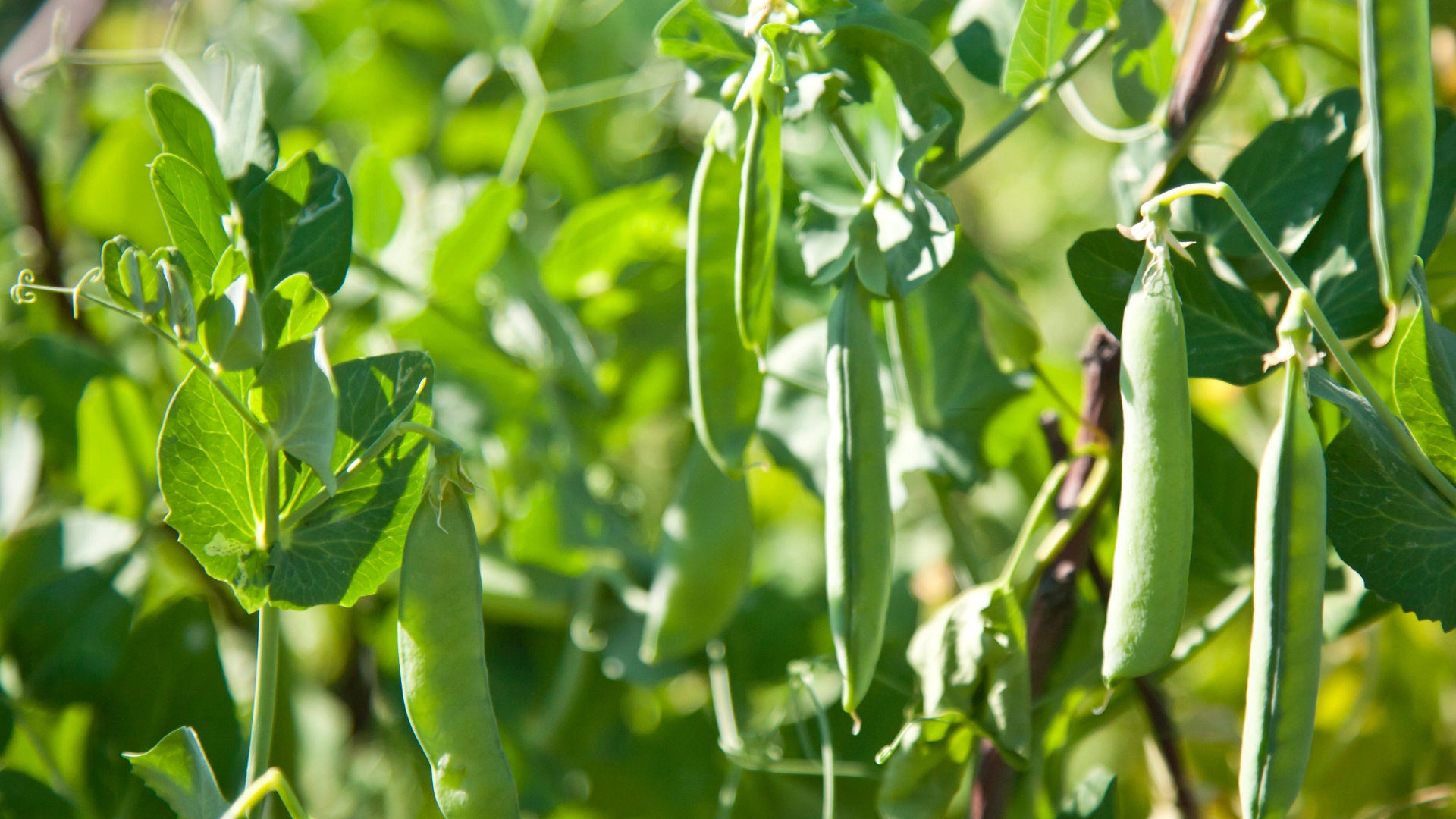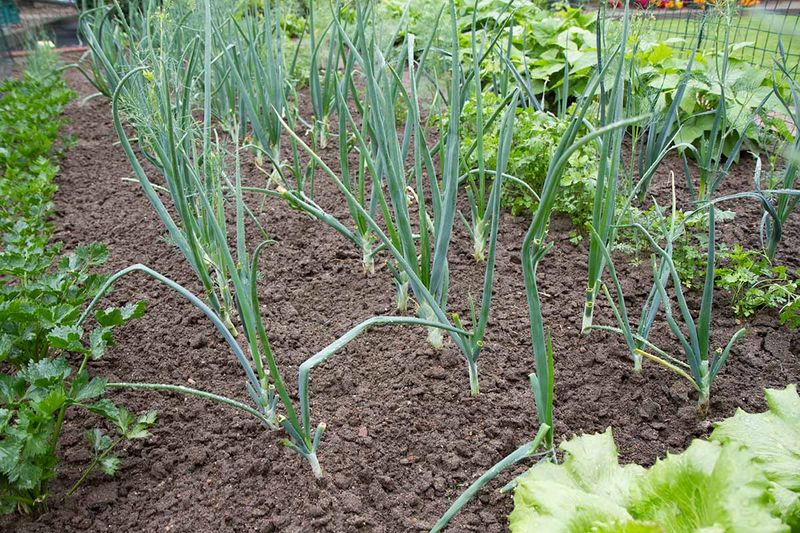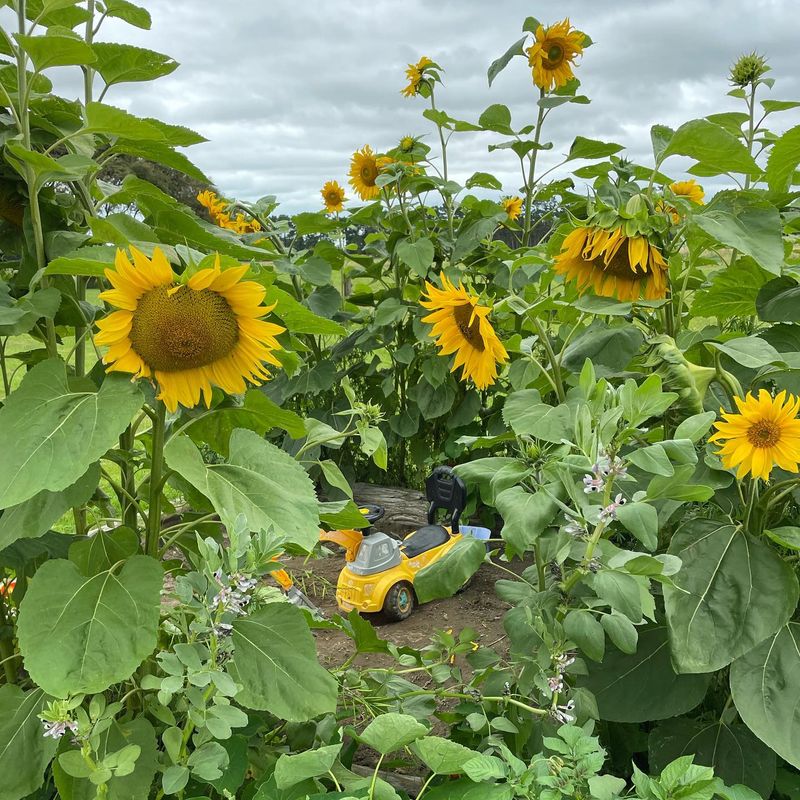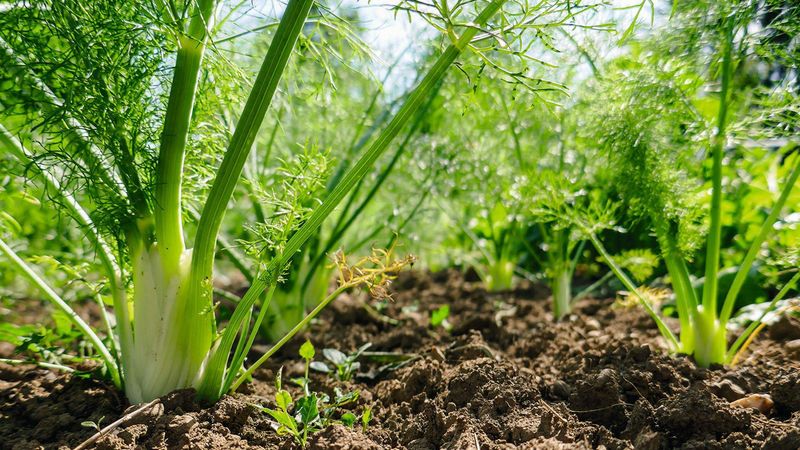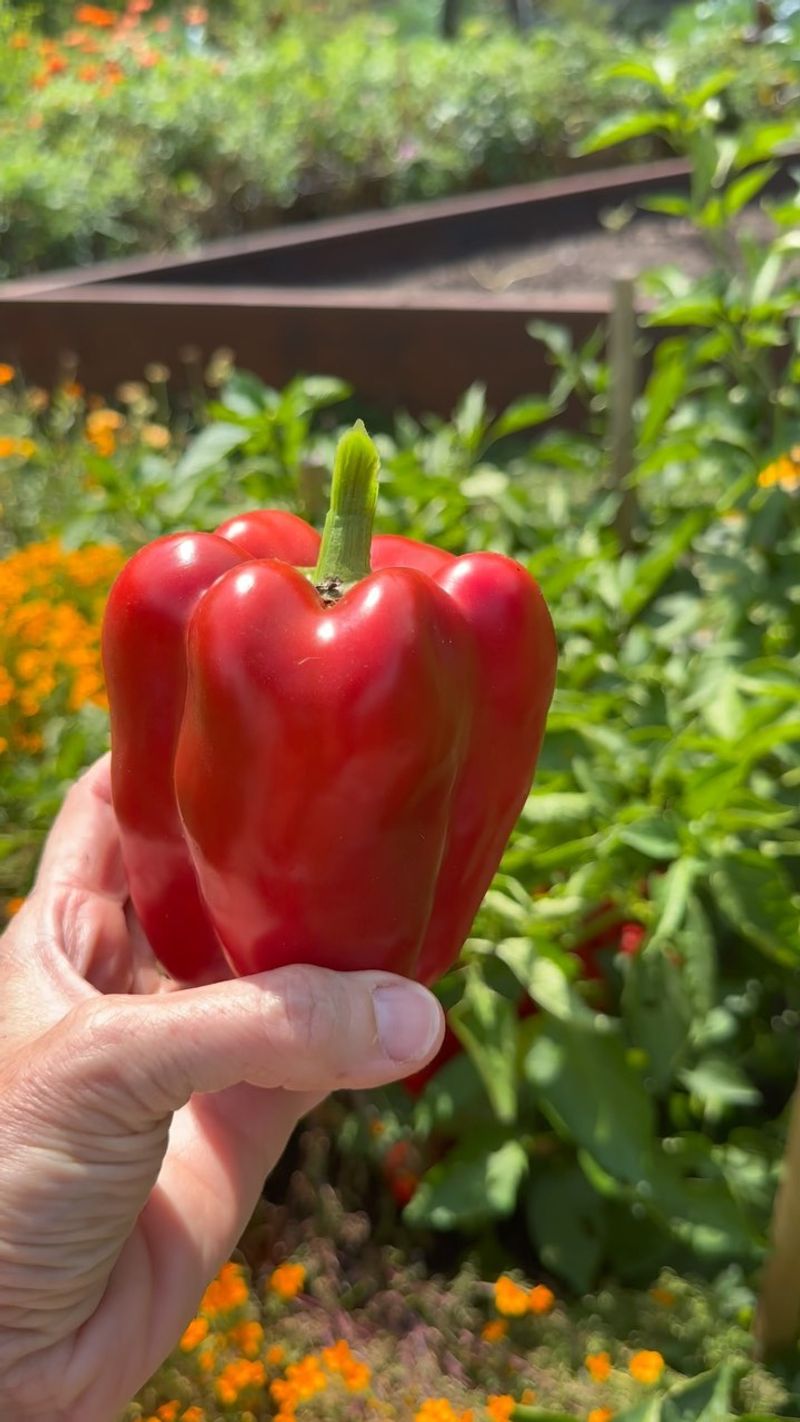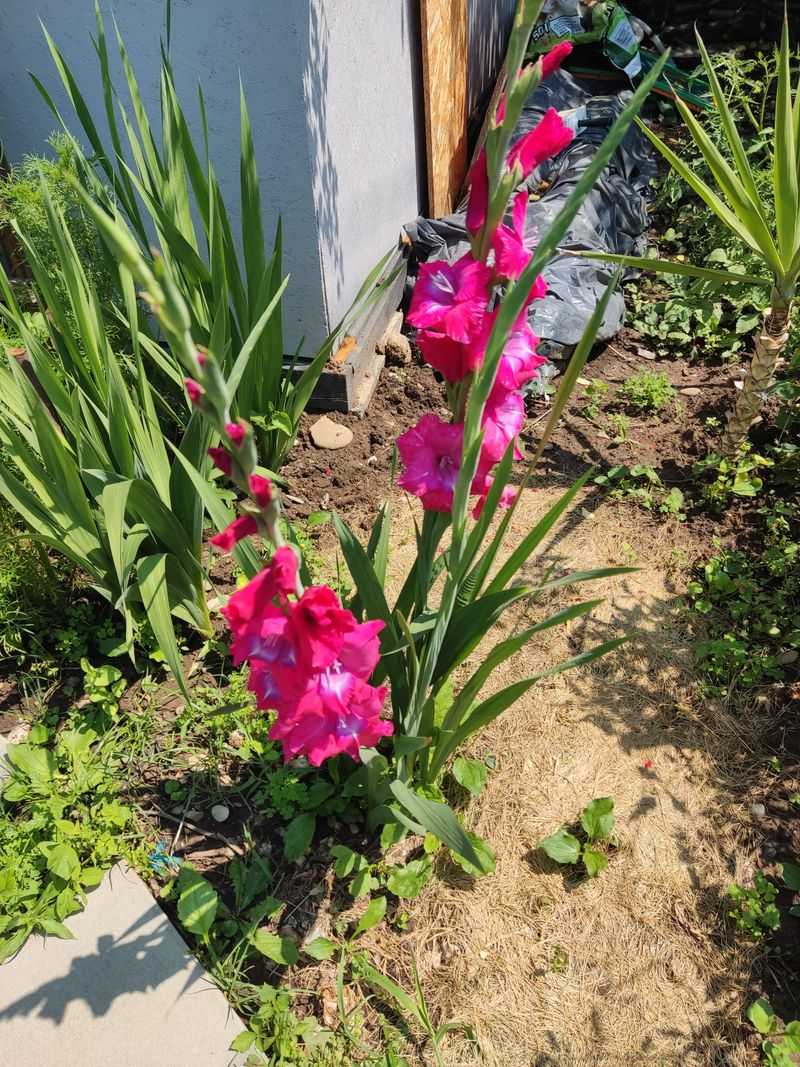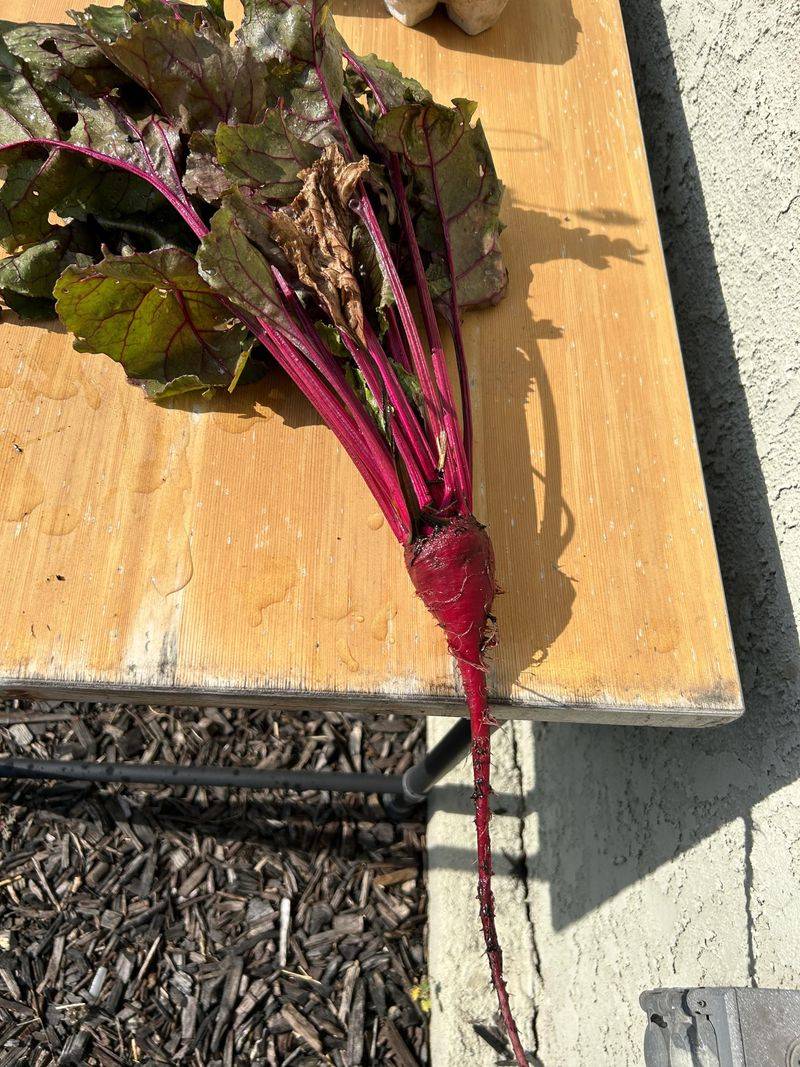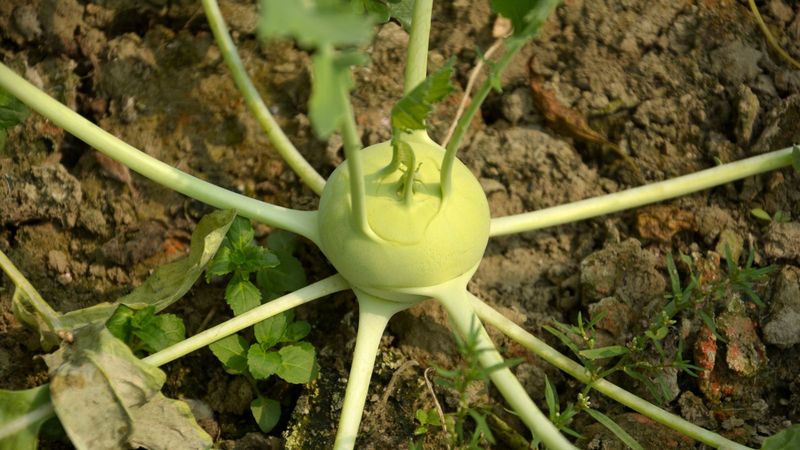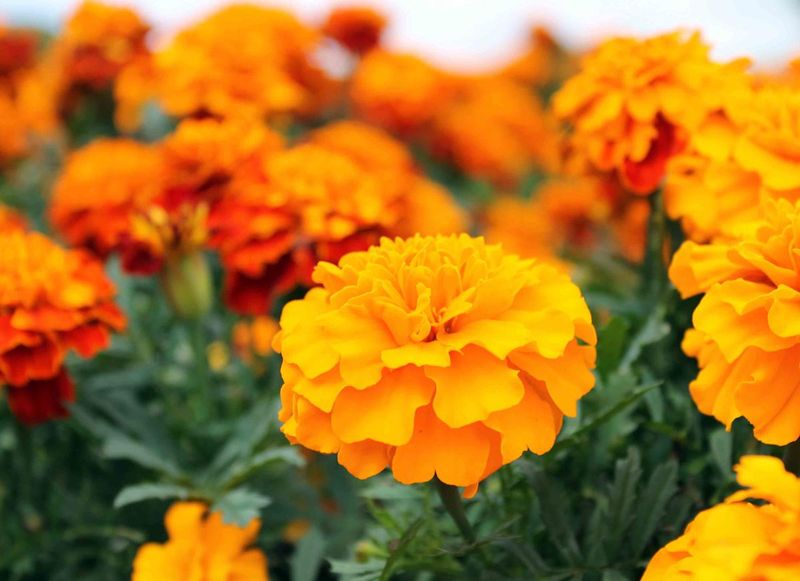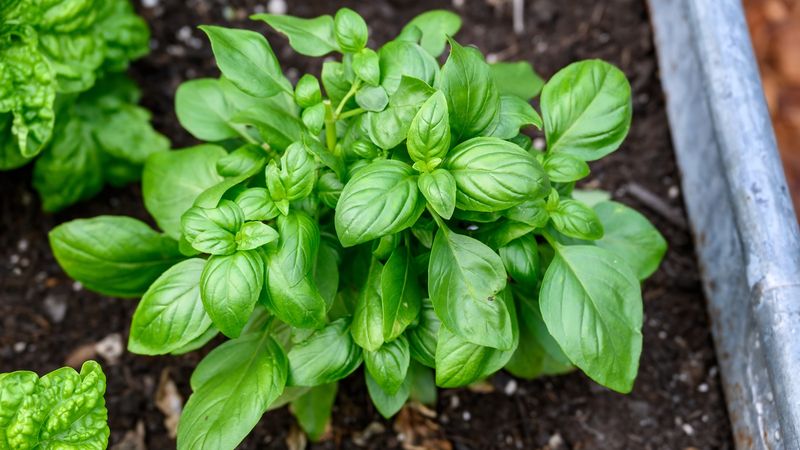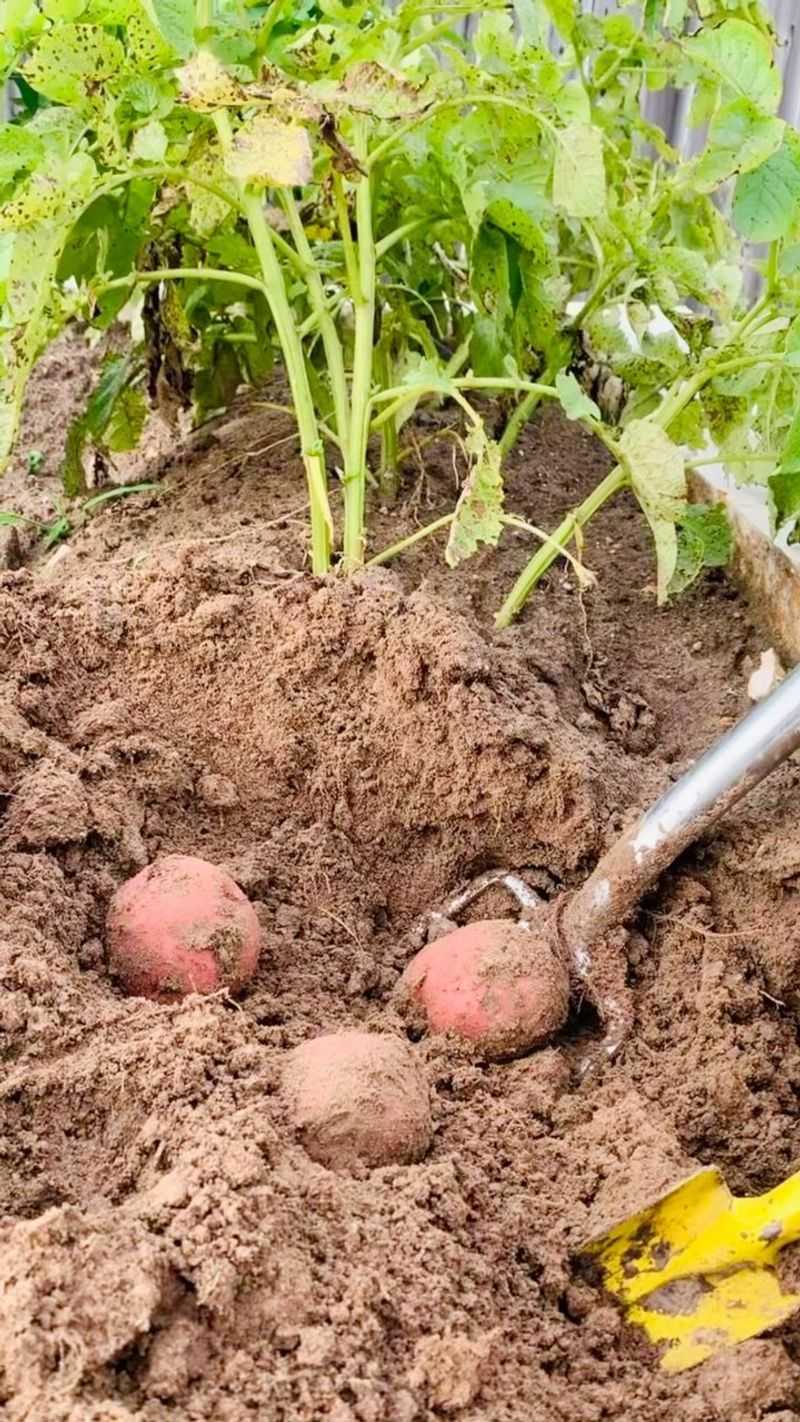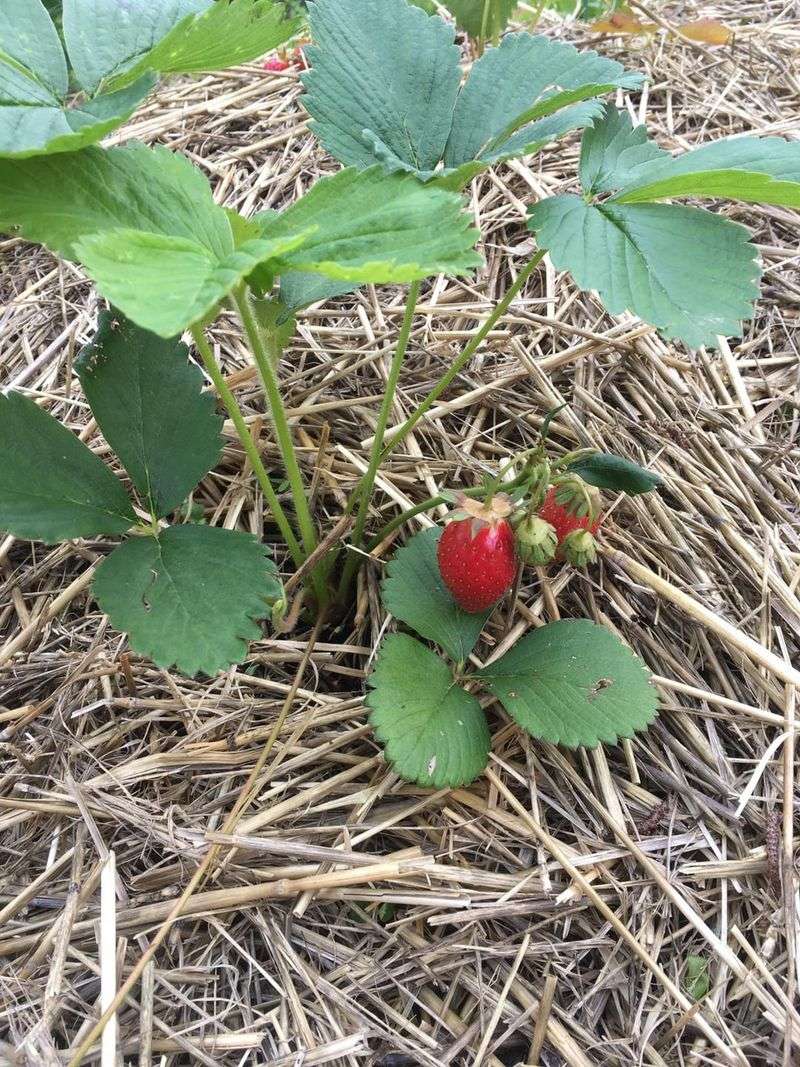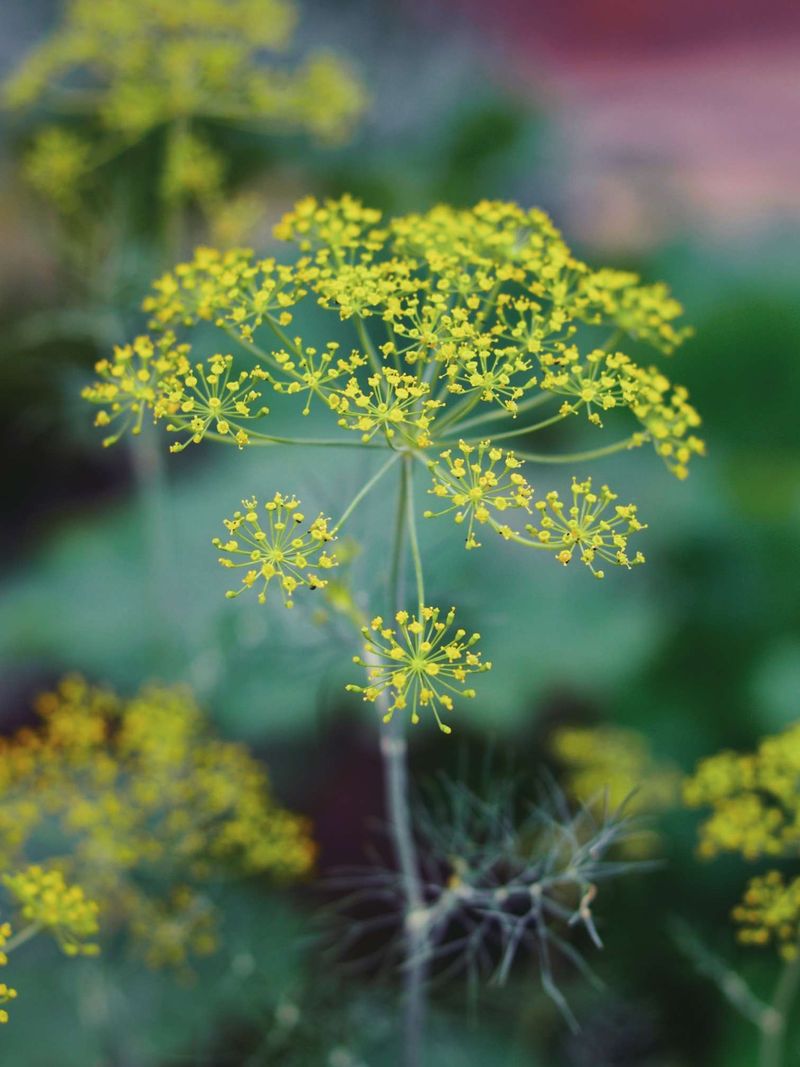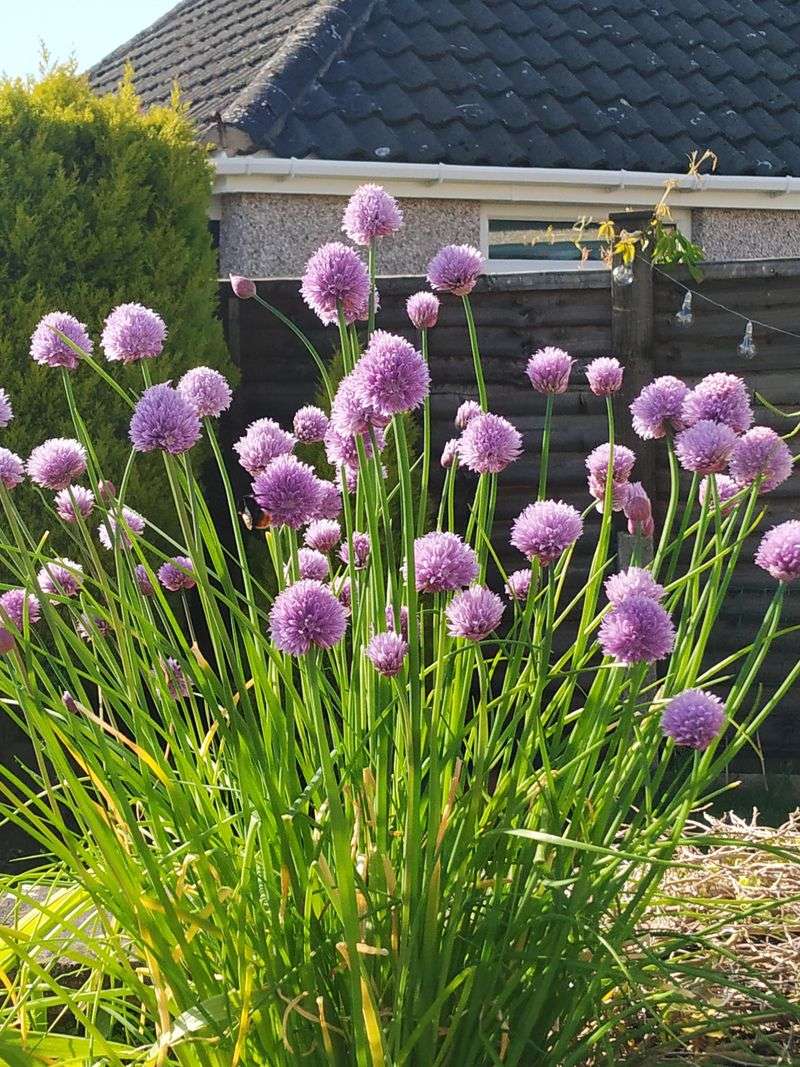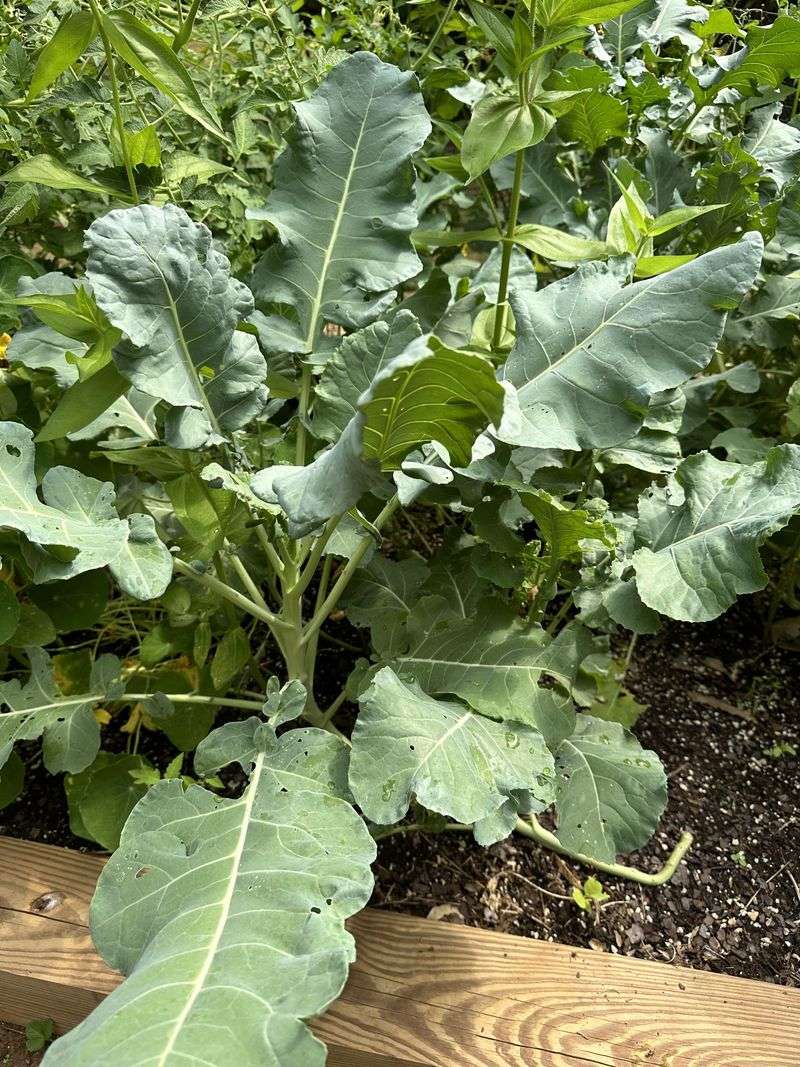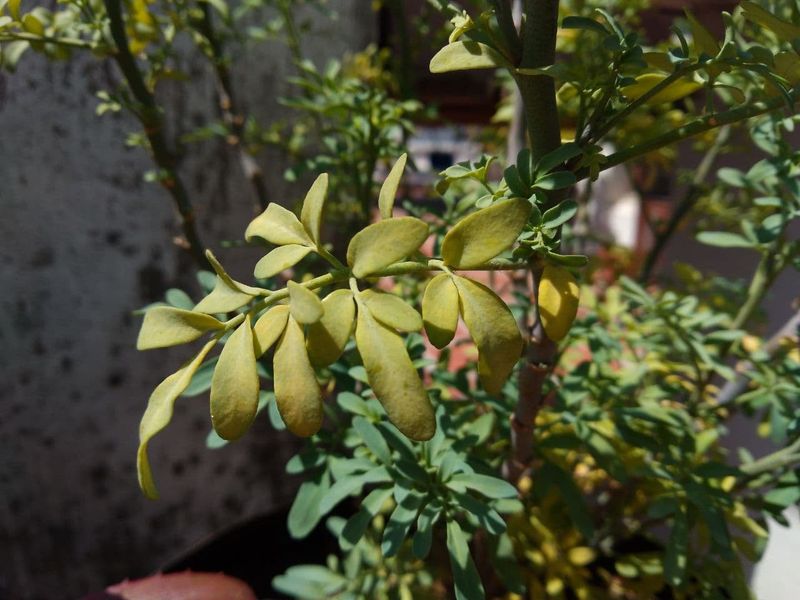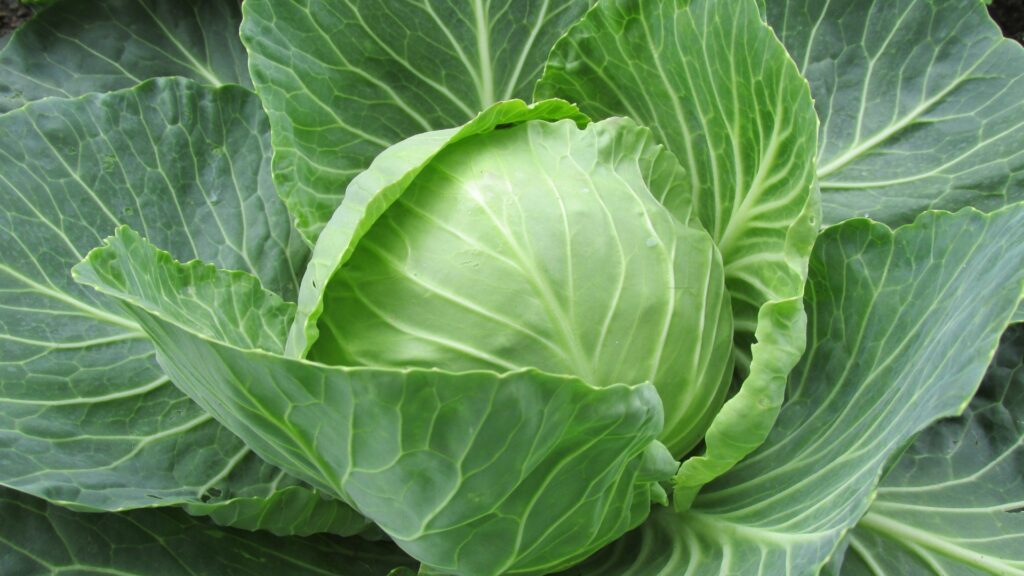Growing beans is one of gardening’s little wins—watching them climb skyward and pop with pods never gets old. But not every plant plays nice in the bean patch.
Some steal nutrients, lure in pests, or quietly sabotage your harvest. I’ve learned (the hard way) that companion planting isn’t just a cute idea—it can make or break your crop.
If you want your beans to thrive, it’s worth knowing which plants to keep at arm’s length. Here’s who I’ve learned not to let crash the bean party.
1. Onions Create Bean Battlefield
Beans and onions have a natural chemical feud going on. The sulfur compounds released by onions actually slow down the nitrogen-fixing bacteria that help bean roots thrive. I planted a row of red onions alongside my pole beans last season and watched my beans struggle all summer.
The beans grew pale and stunted compared to those farther away from the onion patch. Root development was noticeably weaker too.
For best results, keep onions and beans in separate garden beds with at least 3-4 feet between them. The same goes for other alliums like garlic, leeks, and shallots that share these bean-suppressing properties.
2. Sunflowers Cast Deadly Shade
Those cheerful sunflowers might brighten your garden, but they cast serious shade on bean plants. Their tall stalks can block crucial sunlight beans need for photosynthesis. When I interplanted sunflowers with bush beans, the beans stretched awkwardly toward any available light.
Sunflowers are also heavy feeders that deplete soil nutrients beans require. Their extensive root systems outcompete the more delicate bean roots for water and minerals.
If you love both plants, place sunflowers on the north side of your garden where their shadows won’t fall across the bean patch during peak sunlight hours. This simple positioning change makes all the difference.
3. Fennel: The Garden Bully
One of the most antagonistic plants to have near beans. It releases allelopathic compounds that inhibit growth in many vegetables, beans included. My neighbor once planted fennel near her bean patch and watched her previously productive plants wither within weeks.
The chemicals fennel releases into the soil can persist even after the plant is removed. This means rotating beans into a former fennel bed can still cause problems.
Keep fennel isolated in its own container or garden section. If you must plant it in the ground, maintain at least 5 feet distance from your bean area to minimize its growth-stunting effects.
4. Peppers Compete For Bean Nutrients
Both peppers and beans have similar nutrient needs, creating underground competition that weakens both plants. I tried growing jalapeños alongside my bean rows last year and noticed both crops produced less than when separated.
Peppers also attract some of the same pests that plague beans, like aphids. This concentration of similar insects can quickly become an infestation that’s harder to manage organically.
For healthier harvests, plant peppers at least 3 feet away from bean rows. This spacing gives each crop enough room to access the nutrients they need without directly competing with each other.
5. Gladiolus Bulbs Steal Bean Thunder
Gladiolus flowers might add vertical interest to gardens, but their bulbs are secret bean saboteurs. Their extensive underground root systems compete aggressively for the same soil depth that bean roots occupy. When I tried planting gladiolus near my bean patch, my bean harvest dropped by nearly half.
These ornamental plants also attract thrips, which can jump to your beans and cause silvery scarring on pods and leaves. The damage isn’t just cosmetic – it can reduce overall plant vigor.
If you love both plants, keep gladiolus in a separate flower bed or in the ornamental section of your garden, well away from your vegetable plots. Your beans will reward you with better yields and healthier growth.
6. Beets Battle Beans Underground
Beets might seem like innocent root vegetables, but they wage underground warfare with bean roots. Both plants compete for the same soil layers and nutrients, with beets often winning because of their more aggressive root systems.
The competition is especially fierce in clay soils where root penetration is already challenging. Beans struggled to establish their nitrogen-fixing nodules when crowded by beet roots.
If your garden space is limited, separate these crops by at least 18 inches and amend the soil well with compost to reduce competition. Better yet, plant them in completely different sections of your garden rotation plan.
7. Kohlrabi Creates Bean Trouble
Kohlrabi belongs to the brassica family, which generally doesn’t play well with beans. These cabbage relatives secrete compounds that can inhibit bean growth when planted too closely. My experiment with interplanting kohlrabi and beans resulted in noticeably stunted bean plants with yellowing leaves.
Kohlrabi’s shallow but extensive root system also competes directly with bean roots for nutrients and water. The competition is especially problematic during dry spells when water becomes limited.
If you want to grow both crops in the same season, place them in separate garden beds or opposite ends of your growing space. A distance of at least 3 feet helps minimize the negative interactions between these otherwise healthy vegetables.
8. Marigolds: Not Always Bean-Friendly
Marigolds have a reputation as helpful companion plants, but specific varieties can actually harm beans. French marigolds release compounds into the soil that can inhibit the growth of nitrogen-fixing bacteria beans rely on. I learned this lesson after surrounding my bean patch with marigolds.
The strong scent that makes marigolds useful for repelling some pests can also deter beneficial pollinators that beans need. This resulted in fewer bean flowers getting pollinated in my garden.
If you want to use marigolds for pest control, plant them at the borders of your garden rather than directly alongside beans. This creates a protective perimeter without the direct negative impacts on your bean plants.
9. Basil Brings Bean Problems
Basil might enhance the flavor of beans in recipes, but in the garden, they’re not compatible neighbors. While many herbs make good companions for beans, basil competes for similar nutrients and can inhibit bean growth. When I planted basil throughout my bean patch, the beans nearest the herb produced fewer pods.
The aromatic oils that give basil its wonderful scent can actually repel some beneficial insects that beans rely on for pollination. I noticed fewer bees visiting my bean flowers when basil grew nearby.
Keep these plants separated by at least 2 feet in your garden. Better yet, grow basil in containers where you can control its spread and move it away from beans during flowering time to ensure proper pollination.
10. Potatoes Sabotage Bean Success
Potatoes and beans might seem like natural garden companions, but they actually compete fiercely below ground. Both crops require similar soil nutrients and can stunt each other’s growth when planted too closely. I noticed significantly smaller bean harvests in areas adjacent to my potato patch.
More concerning is their shared susceptibility to diseases. Potatoes can harbor pathogens that affect beans, particularly various blights and fungal problems that spread easily between these plants during wet weather.
For garden success, keep potatoes and beans in separate beds with good airflow between them. Plan your crop rotation so beans don’t follow potatoes in the same soil for at least two years to break disease cycles and allow soil nutrients to rebalance.
11. Strawberries Steal Bean Nutrition
These might seem innocent with their sweet berries, but they’re aggressive competitors when planted near beans. Their spreading habit and shallow roots compete directly with bean roots for water and nutrients. I learned this after planting bush beans near my strawberry patch and watching the beans struggle all season.
Strawberries also attract slugs and snails that will happily move over to munch on your tender bean seedlings. The damage can be devastating, especially in wet spring conditions.
Keep strawberries and beans separated by at least 3-4 feet in your garden layout. Better yet, grow strawberries in raised beds or containers where their runners can’t encroach on your bean-growing space and pest problems can be managed separately.
12. Dill Disrupts Bean Development
The aromatic oils that give dill its distinctive scent can actually suppress germination and slow development of bean seedlings. My side-by-side test showed beans planted near dill emerged days later than those planted elsewhere.
While dill attracts beneficial insects, it also draws bean-damaging pests like aphids. The concentration of these pests can quickly build up and spread to your bean plants.
If you want both crops, plant dill at least 3 feet away from beans, preferably in an herb garden section. This distance helps minimize the growth-inhibiting effects while still allowing you to enjoy fresh dill for your summer recipes.
13. Chives Challenge Bean Growth
Chives belong to the allium family along with onions and garlic, sharing their bean-suppressing properties. The sulfur compounds they release interfere with the beneficial bacteria beans need for fixing nitrogen. When I planted chives as a border around my bean bed, the outer rows of beans grew noticeably smaller.
The strong scent of chives can also confuse the beneficial insects that beans rely on for pollination. Fewer pollinators means fewer beans to harvest.
If you value both crops, plant chives in containers rather than directly in the garden soil near beans. This containment strategy prevents their root exudates from affecting nearby plants while still allowing you to enjoy fresh chives throughout the growing season.
14. Broccoli Battles Bean Plants
Broccoli might be a nutritional powerhouse on your plate, but in the garden, it’s a competitor that beans can’t overcome. As a brassica family member, broccoli has extensive nutrient needs that deplete the soil of elements beans require. When I planted broccoli with beans, both crops produced disappointing yields.
Broccoli’s broad leaves also cast significant shade as plants mature. My beans stretching for light near broccoli developed long, weak stems with fewer flowers and pods.
For garden success, plant these crops in separate beds or opposite ends of your garden. If space is limited, time plantings so broccoli is harvested before beans reach their peak growth period, reducing competition during the critical flowering and pod-setting stages.
15. Rue Ruins Bean Health
Keep this one far from your beans. This herb contains powerful compounds that actively suppress bean germination and growth. I accidentally planted rue near my bean trellis and watched as the closest bean seeds either failed to sprout or emerged as weak seedlings.
The oils in rue can persist in soil even after the plant is removed. These residual effects can hamper bean growth for months afterward.
If you want rue for its pest-repelling properties or ornamental value, plant it in a separate herb garden or perennial border at least 6 feet from any bean-growing areas. This distance helps minimize its growth-suppressing influence on your bean crop.
16. Cabbage Crowds Out Beans
Cabbage might seem harmless, but it’s another brassica that clashes with beans in more ways than one. When I planted cabbage near my bush beans, I noticed the beans developed fewer flowers and weaker vines. The cabbage’s dense foliage creates too much shade, limiting the sunlight beans need to thrive.
Cabbage also consumes large amounts of nitrogen, which beans depend on—especially early in the season. The overlapping nutrient demands can stunt both crops, but beans suffer most.
To avoid this conflict, give cabbage its own section of the garden, ideally 3-4 feet away from any bean rows. That way, both plants can grow to their full potential without stepping on each other’s roots—literally and figuratively.

